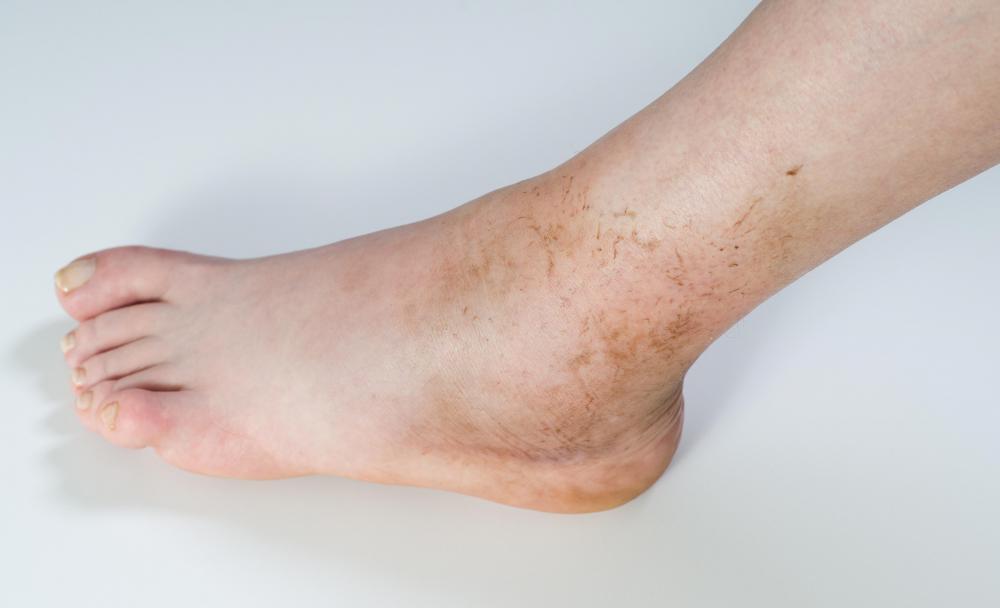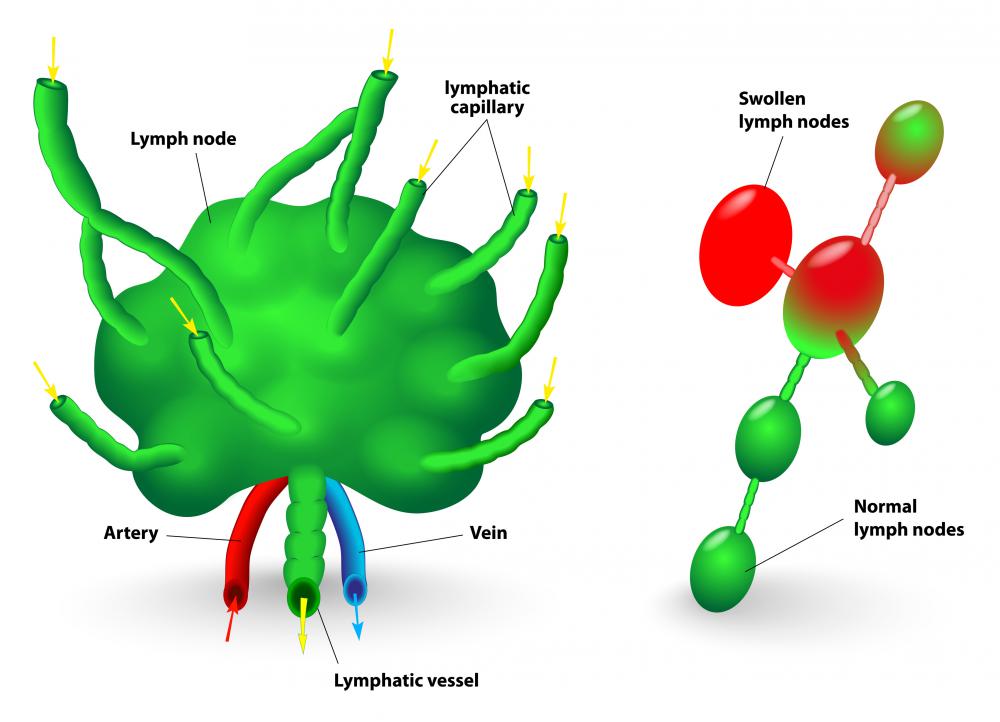At TheHealthBoard, we're committed to delivering accurate, trustworthy information. Our expert-authored content is rigorously fact-checked and sourced from credible authorities. Discover how we uphold the highest standards in providing you with reliable knowledge.
What is a Lymph Duct?
Lymph ducts are part of the body’s lymphatic system. They work in conjunction with lymph nodes and other vessels to circulate disease-fighting lymph throughout the body. A lymph duct specifically moves lymph from various bodily tissues into blood vessels. The human body contains two main types of lymph ducts: the thoracic duct and the right lymph duct.
The lymphatic system is vital to human immune responses, as it helps fight invasive bacteria. Lymph is the primary substance of this system. It consists of a clear to yellowish liquid containing white blood cells, and it is transferred from tissues in the body to the blood via the lymphatic system. While lymph nodes filter the liquid, lymph ducts assist in the transportation of lymph from smaller lymph vessels to blood vessels.

The first primary lymph duct, the thoracic duct, runs along the abdomen to the neck. The chief function of this duct is to collect lymph from the digestive tract, the body’s left side, and the lower right side of the body. As the largest lymphatic vessel in the body, this lymph collector moves about 2 to 4 liters (about 0.5 to 1.1 gallons) of lymph through an individual every day. Lymph movement is aided by the duct's smooth muscle composition, and an individual's breathing facilitates the transport. Once lymph has exited the thoracic duct, it moves to the left subclavian vein, which is a large blood vessel located around the ribs.

Located near the base of the neck, the right lymph duct operates in the same manner as the thoracic duct. Both utilize a low-pressure system to create slow lymph movement. Also like its companion duct, this vessel contains valves that prevent the backflow of lymph and blocks blood from entering the duct. A right duct, as its name implies, is responsible for collecting lymph on the right upper side of the body. As such, tissue vessels in the head, neck, and chest lymph drain into the right duct. Following this process, lymph deposits into the right subclavian vein.

On occasion, these ducts or other lymphatic vessels can become blocked. When a blockage occurs, lymphedema can result. This condition is characterized by a buildup of lymph fluid in body tissues, causing swelling, tightness, and occasional burning or itching in areas like the arms or legs. A test of the lymphatic system called a lymphoscintigraphy can detect such a condition. Ducts may also become dilated, which can cause discomfort as well. Any suspect systems should be examined by a medical professional.
AS FEATURED ON:
AS FEATURED ON:


















Discussion Comments
I don't want to scare anyone though, because a dilated duct doesn't always mean cancer. It just means that there might be a growth there. Growths in the lymph ducts are often benign but sometimes they're not. A biopsy has to be done to make sure.
The most important thing is to see a doctor when symptoms start because early diagnosis is so important when it comes to malignant tumors. Cancer in the lymphatic system is particularly dangerous because it can easily spread to the whole system since everything is connected.
@feruze-- I think the treatment for a blocked lymph duct is drainage. They drain out the fluid that has accumulated.
I haven't had a blocked lymph duct but I have had inflamed/swollen lymph ducts before due to infection. Except for the fluid, my symptoms were common with lymphedema. The area was swollen, tender and painful. It went away after my infection was treated with antibiotics.
Has anyone here experienced a blocked lymph duct? How was it treated?
Post your comments